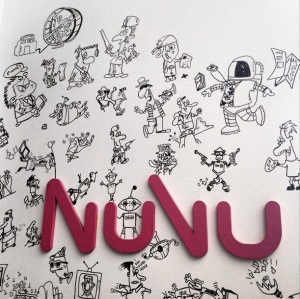I had the opportunity to visit NuVu Studio: The Innovation School last week in Cambridge, MA. NuVu is doing a number of remarkable things in partnership with Beaver Country Day School, which sends approximately 30 high school students each trimester to the NuVu campus to spend 8 weeks deeply engaged in the innovation & design thinking process.
 Each session has a theme. The theme for this past winter session was “health”. Students engaged in 2-week-long projects that explored different problematic prompts. I had the opportunity to speak with Laurel and hear her share about an incredibly innovative product designed to promote health by servicing a need that people face when they are on the brink of death.
Each session has a theme. The theme for this past winter session was “health”. Students engaged in 2-week-long projects that explored different problematic prompts. I had the opportunity to speak with Laurel and hear her share about an incredibly innovative product designed to promote health by servicing a need that people face when they are on the brink of death.  Laurel and her group engaged in the complete design thinking process (as depicted in the above graphic) multiple times over to ultimately produce a functional and portable IV kit that attaches to a nalgene bottle and is able to filter, sterilize, and heat a water solution for combating hypothermia in backcountry or high altitude circumstances when emergency responders may be a long way off. I invite you to learn, through text and images, more about her group’s project by viewing their online portfolio.
Laurel and her group engaged in the complete design thinking process (as depicted in the above graphic) multiple times over to ultimately produce a functional and portable IV kit that attaches to a nalgene bottle and is able to filter, sterilize, and heat a water solution for combating hypothermia in backcountry or high altitude circumstances when emergency responders may be a long way off. I invite you to learn, through text and images, more about her group’s project by viewing their online portfolio.
While the product itself was captivating to me given my love of the outdoors and penchant for mountaineering, what was even more riveting was unique and transferable skill set these high school students had gained in a few short weeks (and those heavily interrupted by winter weather at that!). The NuVu students learned and practiced the skills of:
- Asking thought provoking questions of each other and relevant experts.
- Collaboratively approaching a problem, learning to leverage the strengths of each group member for the success of the team and the project.
- Navigating obstacles, whether they be challenges in design, technology, group dynamics, or thought…persevering through the iterative process of design thinking to the resultant end of a workable prototype.
- Increasing facility with a wide variety of different tools and skills that traditionally take full high school or college courses to master. Students did not enter the doors of NuVu with the ability to use 3D printers and its associated software, wield laser cutters, examine swaths of computer code for errors, complete wiring and electrical circuits, discuss medical diagnoses, and more. However they left with confidence and competence to use their resources to get the answers they need to continue moving the design thinking process forward.
- Confidently advocating for their perspective and approach.
- Communicating their thinking verbally, via a variety of multimedia tools, and in articulate text to convey process, possibilities, and product.
When given the time, the freedom, and the tools to focus on a single problem the ideas  generated by these young minds were unbelievably impressive. These students used high-level skills in all curriculum areas (mathematics, programming, writing, reading, science, history, communications, etc.) throughout their work. It begs the question, how can we make this incredibly valuable, transformative, and applicable-to-the-future experience more broadly available in independent schools? What creativity is lost by requiring completion of a set course of study before students are presented with real-world dilemmas? What lives could be saved or bettered if children, who are often deep wells of empathy, were given meaningfully structured opportunities in their education to truly unleash the power of their intellect and creativity? What lessons does the NuVu Studio have for us that we can apply to ensure that our children are prepared for THEIR future…and not our past?
generated by these young minds were unbelievably impressive. These students used high-level skills in all curriculum areas (mathematics, programming, writing, reading, science, history, communications, etc.) throughout their work. It begs the question, how can we make this incredibly valuable, transformative, and applicable-to-the-future experience more broadly available in independent schools? What creativity is lost by requiring completion of a set course of study before students are presented with real-world dilemmas? What lives could be saved or bettered if children, who are often deep wells of empathy, were given meaningfully structured opportunities in their education to truly unleash the power of their intellect and creativity? What lessons does the NuVu Studio have for us that we can apply to ensure that our children are prepared for THEIR future…and not our past?
 with adults, and able to translate that experience into story and picture. This quote from the interview resonates deeply with me, and I find in my experience to be profoundly true:
with adults, and able to translate that experience into story and picture. This quote from the interview resonates deeply with me, and I find in my experience to be profoundly true:



